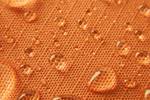Michelman provides fiber sizing support for FibreCoat aluminum-coated basalt fibers
AluCoat, addressing applications requiring conductive and lightweight materials, integrates Hydrosize which provides the right balance of sizing for optimal processing, unlocking key fiber attributes.

Source | Michelman
Michelman (Cincinnati, Ohio, U.S.), a global developer of advanced materials, has collaborated with (Aachen, Germany), a high-performance materials company, to support the launch of FibreCoat’s aluminum-coated basalt fiber. Named AluCoat, the fiber was developed by FibreCoat to address the need for lightweight, conductive materials in applications such as electromagnetic interference (EMI) and radio-frequency interference (RFI) shielding, as well as thermal management for electric vehicles, consumer electronics and energy storage.
Michelman’s Hydrosize fiber sizing technology plays a critical role in enhancing the performance and processability of FibreCoat’s fiber for composites manufacturing. FibreCoat’s aluminum-coating process partially or fully coats basalt fibers, combining the material’s mechanical properties with aluminum conductivity. By integrating Hydrosize, the aluminum-coated fibers are said to be able to achieve key performance attributes necessary for reliable composite applications. Michelman’s sizing helps form stable fiber bundles, reducing fuzz and maintaining fiber integrity during processing, and supports weavability, making continuous fibers more spreadable. Additionally, the sizing ensures compatibility with the resin systems, and balances compatibility between the aluminum and basalt surfaces on the fiber.
The relationship between Michelman and FibreCoat began more than a decade ago at the Institute for Textile Technology, which is part of RWTH Aachen University, where FibreCoat’s founders identified Michelman’s fiber sizing expertise as essential to the company’s fiber’s performance. Throughout development, Michelman provided support as FibreCoat refined the fiber’s formulation to achieve optimal results.
According to Zeineb Romdhane, lab coordinator at FibreCoat, achieving the right balance in the sizing application was crucial — too little sizing would lead to fiber separation, while too much could cause excessive adhesion.
“Michelman has been a trusted partner for many years, providing technical support as we moved from research to commercialization. Their willingness to assist us through trial and error allowed us to refine our fiber technology,” emphasizes Alexander Lüking, co-founder and CTO at FibreCoat. “Hydrosize fiber sizing ultimately helped us address key challenges, including maintaining a PFAS-free solution, ensuring smooth unwinding to prevent fibers from sticking together on the bobbin and minimizing fuzz during processing.”
Related Content
-
DITF Denkendorf advances sustainable carbon fibers, oxide fibers for CMC and more
The German Institutes of Textile and Fiber Research are targeting more sustainable carbon fiber via low-pressure stabilization and bio-based precursors, and working with Saint-Gobain to commercialize oxide ceramic fibers for CMC.
-
Bio-based SiC ceramics from wood polymer composites
Austrian research institute Wood K plus makes 95% silicon carbide ceramics more sustainable (>85% bio/recycled content), enables 3D shapes via extrusion, injection molding and 3D printing.
-
Composites end markets: Sports and recreation (2025)
The use of composite materials in high-performance sporting goods continues to grow, with new advancements including thermoplastic and sustainability-focused materials and automated processes.






